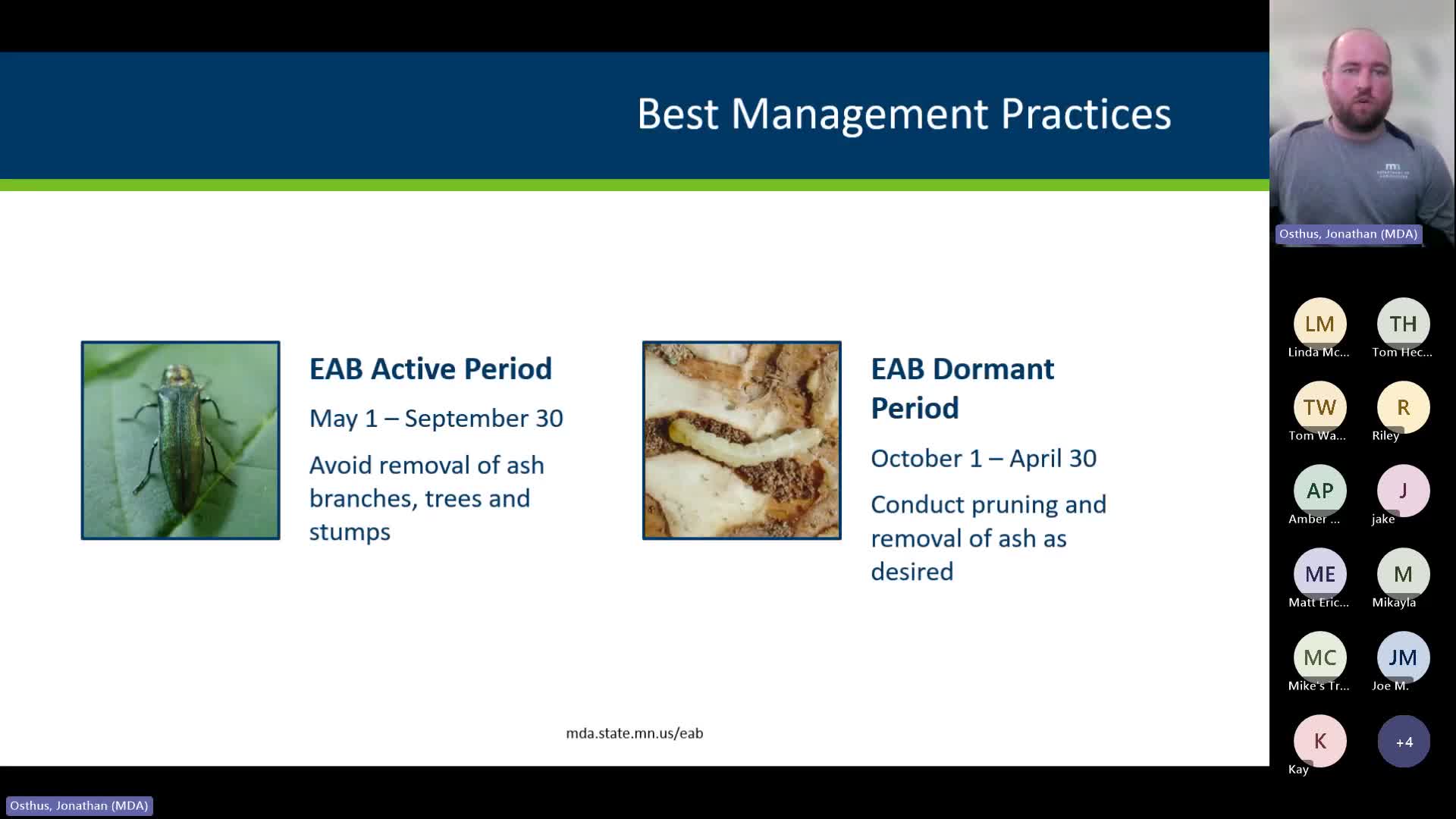Experts Recommend Best Practices for Managing Emerald Ash Borer Infestations
February 22, 2024 | Agriculture, Department of , Agencies, Boards, & Commissions, Executive, Minnesota

This article was created by AI summarizing key points discussed. AI makes mistakes, so for full details and context, please refer to the video of the full meeting. Please report any errors so we can fix them. Report an error »

The recent Emerald Ash Borer Informational Meeting held in Crow Wing County highlighted critical strategies for managing the invasive pest threatening local ash trees. With the adult beetles active from May to September, experts emphasized the importance of timing in tree maintenance to prevent further infestations.
During the meeting, attendees learned that the best practices for managing ash trees involve avoiding removal, pruning, or transporting ash materials during the beetle's flight period. Instead, the ideal time for such activities is from October 1 to April 30, when the beetles are dormant. This approach minimizes the risk of inadvertently spreading the pest to new areas.
The discussion also focused on the significance of proactive tree management. Communities are encouraged to identify and remove poor-quality ash trees before the Emerald Ash Borer arrives, as these trees are more susceptible to infestation. Once the pest is detected, a sanitation program prioritizing the removal of infested trees, particularly those showing woodpecker damage, is crucial. Such trees are more likely to harbor the beetle, posing a greater risk to surrounding healthy trees.
In addition to removals, the meeting covered treatment options for homeowners and municipalities. Preventative and therapeutic insecticide treatments can protect trees from the Emerald Ash Borer, especially if applied before or shortly after infestation. Experts recommend consulting with tree care professionals for larger trees, as proper application of systemic insecticides is essential for effective protection.
The meeting underscored the urgency of addressing the Emerald Ash Borer threat, as its population continues to grow in Minnesota. Residents were encouraged to remain vigilant and monitor their trees for signs of infestation, particularly during the winter months when visibility is clearer.
As communities grapple with the potential loss of ash trees, the strategies discussed at the meeting aim to preserve the health of local forests and maintain the aesthetic and environmental benefits these trees provide. The next steps involve ongoing education and collaboration among residents, local governments, and tree care professionals to combat this invasive species effectively.
During the meeting, attendees learned that the best practices for managing ash trees involve avoiding removal, pruning, or transporting ash materials during the beetle's flight period. Instead, the ideal time for such activities is from October 1 to April 30, when the beetles are dormant. This approach minimizes the risk of inadvertently spreading the pest to new areas.
The discussion also focused on the significance of proactive tree management. Communities are encouraged to identify and remove poor-quality ash trees before the Emerald Ash Borer arrives, as these trees are more susceptible to infestation. Once the pest is detected, a sanitation program prioritizing the removal of infested trees, particularly those showing woodpecker damage, is crucial. Such trees are more likely to harbor the beetle, posing a greater risk to surrounding healthy trees.
In addition to removals, the meeting covered treatment options for homeowners and municipalities. Preventative and therapeutic insecticide treatments can protect trees from the Emerald Ash Borer, especially if applied before or shortly after infestation. Experts recommend consulting with tree care professionals for larger trees, as proper application of systemic insecticides is essential for effective protection.
The meeting underscored the urgency of addressing the Emerald Ash Borer threat, as its population continues to grow in Minnesota. Residents were encouraged to remain vigilant and monitor their trees for signs of infestation, particularly during the winter months when visibility is clearer.
As communities grapple with the potential loss of ash trees, the strategies discussed at the meeting aim to preserve the health of local forests and maintain the aesthetic and environmental benefits these trees provide. The next steps involve ongoing education and collaboration among residents, local governments, and tree care professionals to combat this invasive species effectively.
View full meeting
This article is based on a recent meeting—watch the full video and explore the complete transcript for deeper insights into the discussion.
View full meeting
